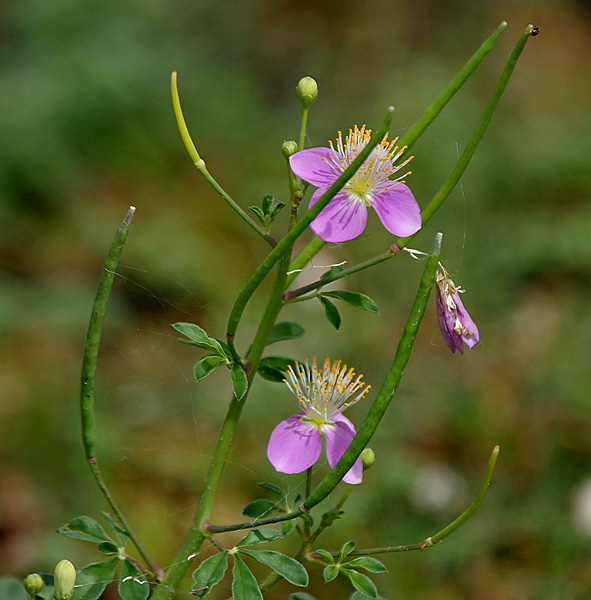|
Cleome Tetrandra
''Cleome tetrandra'' is a species of plant in the Cleomaceae family and is found in Western Australia. The annual herb has an erect to straggling habit and typically grows to a height of . It blooms between January and July producing yellow flowers. It is found along creeks and amongst sandstone outcrops on ridges throughout much of the Kimberley Kimberly or Kimberley may refer to: Places and historical events Australia * Kimberley (Western Australia) ** Roman Catholic Diocese of Kimberley * Kimberley Warm Springs, Tasmania * Kimberley, Tasmania a small town * County of Kimberley, a ... region of Western Australia growing in sandy soils. References {{Taxonbar, from=Q15518418 tetrandra Plants described in 1824 Flora of Western Australia ... [...More Info...] [...Related Items...] OR: [Wikipedia] [Google] [Baidu] |
Cleomaceae
The Cleomaceae are a small family of flowering plants in the order Brassicales, comprising about 300 species in 10 genera, or about 150 species in 17 genera.Cleomaceae, Zhang Mingli (张明理)1; Gordon C. Tucker2, Harvard.edu/ref> These genera were previously included in the family Capparaceae, but were raised to a distinct family when DNA evidence suggested the genera included in it are more closely related to the Brassicaceae than they are to the Capparaceae. The APG II system allows for Cleomaceae to be included in Brassicaceae.Stevens, P. F. (2001 onwards) Angiosperm Phylogeny WebsiteBrassicales Taxonomy In 1994, a group of scientists including Walter Stephen Judd suggested to merge the Capparaceae (which at that time included the Cleomaceae) with the Brassicaceae. Early DNA-analysis showed that the Capparaceae - as defined at that moment - were paraphyletic, and others suggested to assign the genera closest to the Brassicaceae to the Cleomaceae. The Cleomaceae and Brassicac ... [...More Info...] [...Related Items...] OR: [Wikipedia] [Google] [Baidu] |
Kimberley (Western Australia)
The Kimberley is the northernmost of the nine regions of Western Australia. It is bordered on the west by the Indian Ocean, on the north by the Timor Sea, on the south by the Great Sandy Desert, Great Sandy and Tanami Desert, Tanami deserts in the region of the Pilbara, and on the east by the Northern Territory. The region was named in 1879 by government surveyor Alexander Forrest after Secretary of State for the Colonies John Wodehouse, 1st Earl of Kimberley. History The Kimberley was one of the earliest settled parts of Australia, with the first humans landing about 65,000 years ago. They created a complex culture that developed over thousands of years. Yam (vegetable), Yam (''Dioscorea hastifolia'') agriculture was developed, and rock art suggests that this was where some of the earliest boomerangs were invented. The worship of Wandjina deities was most common in this region, and a complex theology dealing with the transmigration of souls was part of the local people's r ... [...More Info...] [...Related Items...] OR: [Wikipedia] [Google] [Baidu] |
Cleome
''Cleome'' is a genus of flowering plants in the family Cleomaceae, commonly known as spider flowers, spider plants, spider weeds, or bee plants. Previously, it had been placed in the family Capparaceae, until DNA studies found the Cleomaceae genera to be more closely related to the Brassicaceae than the Capparaceae. Cleome and clammyweed, (''Polanisia dodecandra'') can sometimes be confused. The simplest way to differentiate the two is to compare the seedpods which project out or down on cleome and up on clammyweed. The genus ''sensu stricto'' includes about 170 species of herbaceous annual or perennial plants and shrubs.Huxley, A., ed. (1992). ''New RHS Dictionary of Gardening'' 1: 652-653. Macmillan. . The genus has a subcosmopolitan distribution throughout the tropical and warm temperate regions of the world. However, a recent DNA study failed to separate ''Cleome'', ''Podandrogyne'', and '' Polanisia'' from each other, so some taxonomists have abandoned the last two of the ... [...More Info...] [...Related Items...] OR: [Wikipedia] [Google] [Baidu] |
Plants Described In 1824
Plants are predominantly photosynthetic eukaryotes of the kingdom Plantae. Historically, the plant kingdom encompassed all living things that were not animals, and included algae and fungi; however, all current definitions of Plantae exclude the fungi and some algae, as well as the prokaryotes (the archaea and bacteria). By one definition, plants form the clade Viridiplantae (Latin name for "green plants") which is sister of the Glaucophyta, and consists of the green algae and Embryophyta (land plants). The latter includes the flowering plants, conifers and other gymnosperms, ferns and their allies, hornworts, liverworts, and mosses. Most plants are multicellular organisms. Green plants obtain most of their energy from sunlight via photosynthesis by primary chloroplasts that are derived from endosymbiosis with cyanobacteria. Their chloroplasts contain chlorophylls a and b, which gives them their green color. Some plants are parasitic or mycotrophic and have lost the ability ... [...More Info...] [...Related Items...] OR: [Wikipedia] [Google] [Baidu] |



